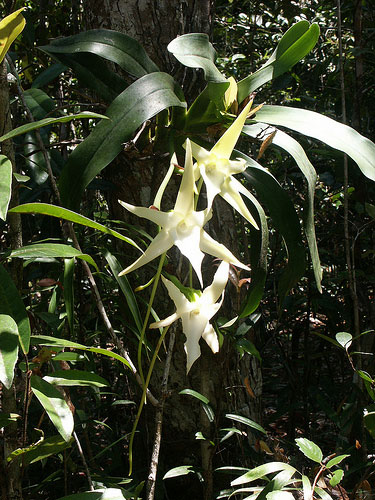Angraecum sesquipedale (Christmas Orchid, Darwin's Orchid, King of the Angraecums, or Star of Bethlehem Orchid)
Angraecum sesquipedale, also called the Christmas Orchid, Darwin's Orchid, King of the Angraecums, or Star of Bethlehem Orchid, is the most magnificent of all Angraecum species. It's accumulated so many common names for a reason: people pay attention to them, as the flowers are quite dramatic. The Latin name "sesquipedale" means "a foot and a half", and refers to the length of the flower's nectar-containing spur. Charles Darwin famously anticipated the existence of a moth with a proboscis long enough reach the bottom of the flower's nectary. The predicted moth was later discovered in 1903; it is the hawk moth Xanthopan morganii praedicta. They usually bloom in midwinter when cultivated in the northern hemisphere (hence the "Christmas Orchid" moniker,) and the white, waxy flowers are fragrant at night, to attract its nocturnal pollinator. Individual flowers can last a couple of months.
Angcm. sesquipedale growing wild in Madagascar
Image courtesy of scott.zona
Distributed under the Creative Commons Attribution 2.0 Generic license.